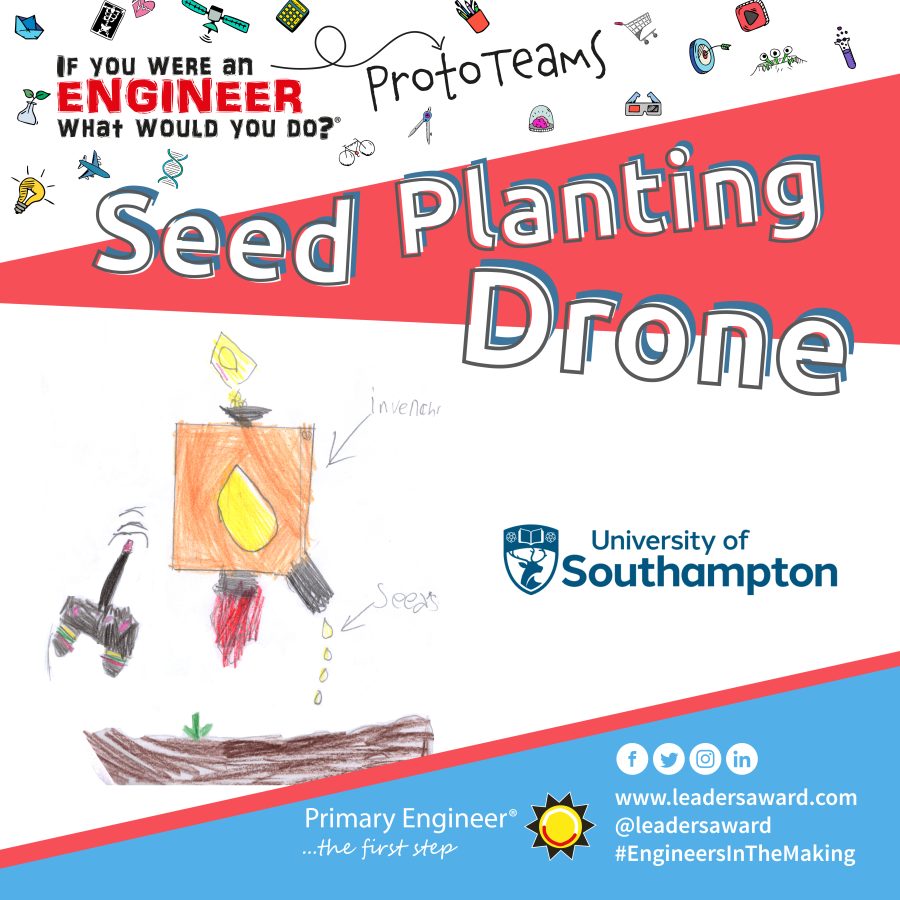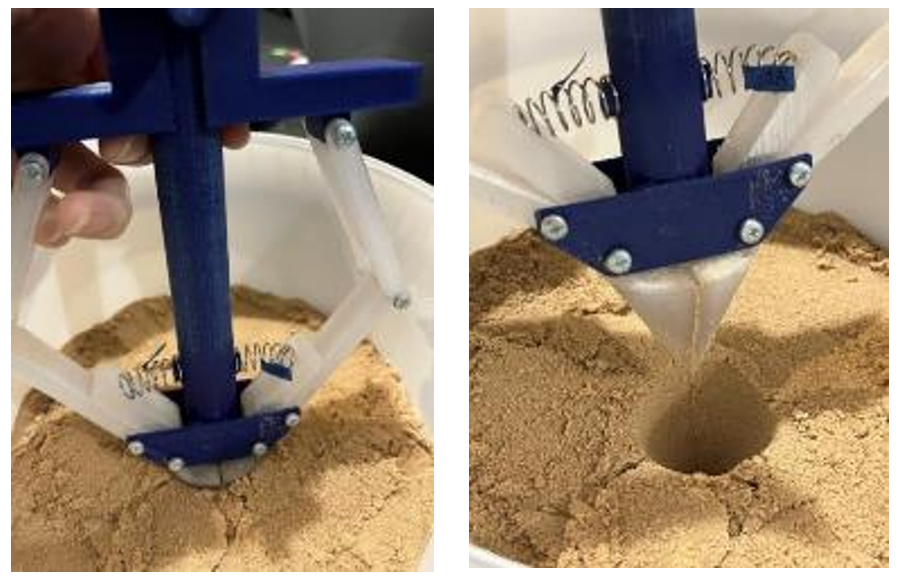
University of Southampton mid-way prototype update
Progress of the build
Inspired by the ‘Seed Planting Drone’ concept from Emily Jackson at St. James C E Primary Academy, the ‘Automated Seed Planting System’ is a prototype designed by six students from University of Southampton. The aim is to plant a range of seeds to enhance soils and increase biodiversity in areas of land where labour & budgets are limited.
The soil conditions are sensed by the robot. Users also make some choices and the best seeds are chosen with some help from software. Referring to a database, the robot knows how deep to plant each type of seed and adjusts its mechanism.

The robot will need to be programmed to plant seeds in a pattern to suit the shape of the land area and the spacing needed for each type of seed. The robot can plant any mix of 4 types of seeds to the correct depth and spacing.

The student group visited Emily Jackson’s class at St. James C E Primary Academy to show their design and parts of their prototype build. They were asked a number of interesting questions, including, ‘what happens when it rains?’ They are now designing a body for the robot.
The student group hosted a University of Southampton Science and Engineering Day activity ‘Humans Vs Robots: Time to Plant Seeds’ on 16 March. Visitors, including Emily Jackson, were challenged to see how many seeds they could plant in a regular pattern in 30 seconds.
Problems/obstacles faced/overcome/anticipated
Some seeds are irregular shapes. The seeding dispenser needs some more powerful motors to ensure it does not get stuck.
Permission is needed to test the robot by planting seeds on ground near the workshop in the School of Engineering.
Next steps – planning
As the robot system parts are fully assembled together, we shall soon see how many seeds the robot will plant in a given time – whether it is faster than humans, or more accurate, or both.
Feedback can also be sought from a local City Farm. They can offer their expert opinion on how good the robot needs to be at planting different seeds, to ensure everyone would think it is a good design.
The finished prototype will be officially unveiled on 13th June 2024 at University of Southampton for our South England Award Ceremony and Public Exhibition.
